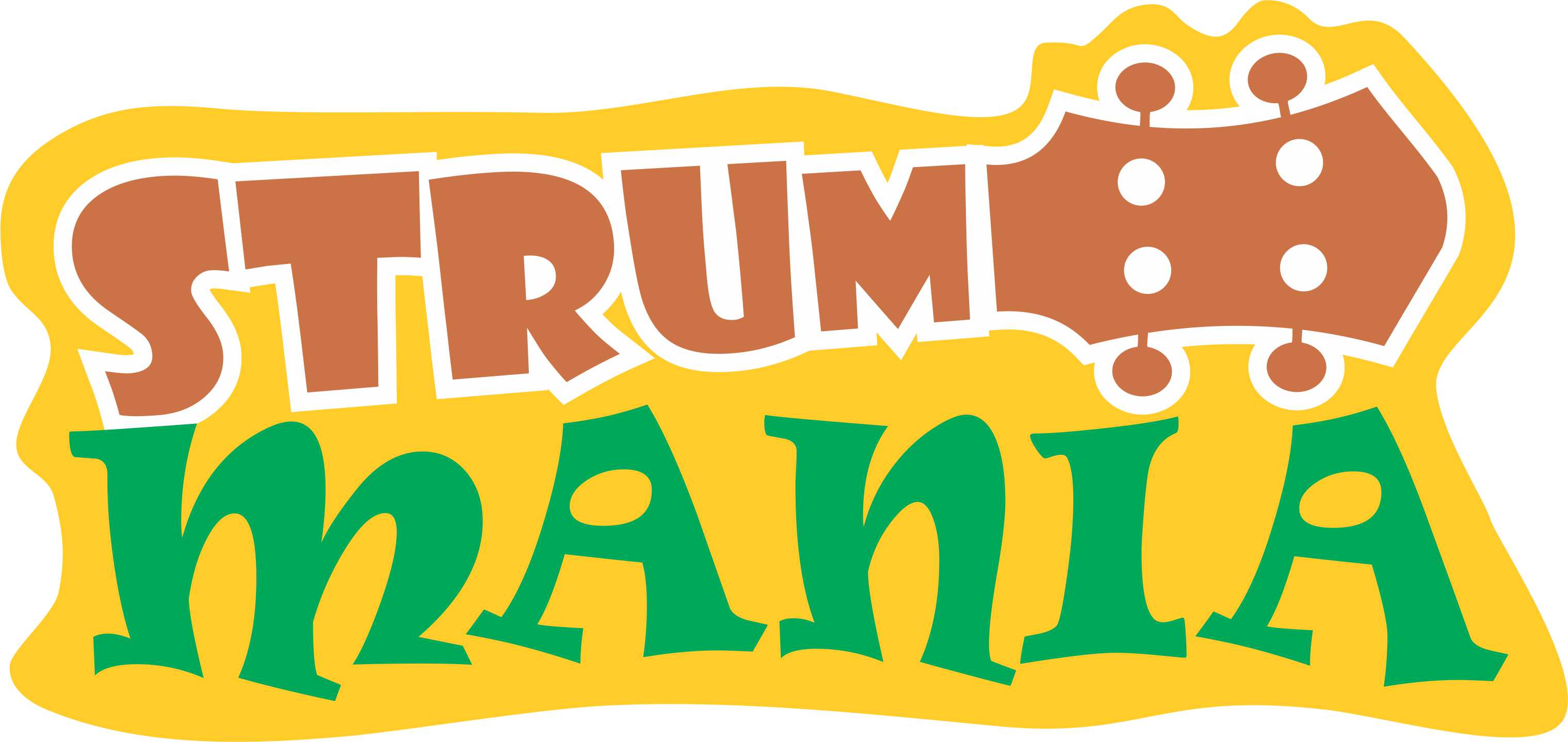



Practice tips.
o Have regular short practice
sessions.
o Listen to a song and clap along
to find the basic rhythm. Then
hold your strings loosely with
your left hand and transfer the
rhythm into a percussive
strumming pattern with your
right hand.
o Always keep to the beat of the
song by tapping your foot.
Loosen up a bit, stand up and
move your body to the music.
That way as well as keeping
the beat you will develop a
natural tendency to find the
rhythm within each song and
your strumming will become
fabulous.
o Put down the music book and
listen for the chord changes,
there is no quicker way to
learn than to train your ear.
Given time you will be able to
play the chords simply by
singing or ‘thinking’ the
melody.
o Play with your ukulele and get
into the habit of listening and
making it sound as good as
you can, even when doing
basic exercises.
o Remember, whatever you can
manage easily is enough.
Strumming.
Every song has a unique feel to it that sets it apart from all others, and the best way for you to
differentiate one song from the other, is with your strum.
For you to do this you will need to develop a flexible and broad strumming style. Even songs of the
same genre (shit I hate that word) are unique. The point being that one strum doesn’t fit all. So
whether the song is reggae, calypso, swing or whatever; a reggae strum will not fit all reggae tunes
and so on. It is not enough to learn a reggae or calypso strum and play it throughout a song, for it
will soon become a cliché and lose all its punch.
Flexible strumming starts with a broad and varied palette of strums that you develop and fix in your
fingers muscle memory so that you can play them automatically and without much thought. The best
way to do this, is to practice each strum until you have it fixed, and then gradually introduce the
different strums into your playing. If this is to work you will need to practice, sorry, there is no way
round this but to practice.
Start blending the different strums into your songs, one or two at a time and try different
combinations. The important thing here is to learn to change from one strum to another within a
regular time signature, the most common being 4/4 and 3/4, without losing the timing. That may
sound difficult, but it will fall into place as you practice with your new strums when playing songs.
To apply these strumming techniques to a song you first need to find the rhythmic pattern of the
song by studying it carefully. YouTube is a good way to do this, because you are able to watch the
singer, backing vocalists and band members to see how they move. As you listen pick out the
rhythm of the song by accompanying percussion, drum, fingers, hands, back of your uke....it
doesn’t matter, but get in and develop your own version that you can use as the driver of your
strumming. Pick up the uke and hold your strings loosely with your left hand and transfer the rhythm
into a percussive strumming pattern with your right hand.
Let’s look at some of the simple strums as a basis for this exercise. Be inventive and develop each
one further to suit your style of playing.
o Down, using thumb. Brush your thumb across all of the strings, which tends to leave your
hand low down for the upstroke. You can also use your thumb to strike the G string on the
way down. If you were to play Am you can hit the G string and hammer down at A. That
sounds pretty good if you follow it with a strum. A thumb strum on its own can also be used
in a triplet (more about that later).
o Down forefinger. This is the most common strum and often forms the rhythmic structure to
add other strums. It can be made to sound more varied than the thumb strum, either by
using the finger pad or nail to strum the strings. Because your finger is flexible, you can add
variation to the arm movement by varying the flick speeds. See how many variations of this
strum you can make by using flexible finger wrist and arm movements.
o Down/up. Another good combo that you can put to good use. Practice this 2 part strum in
one beat so that it becomes one-and or down-up. Practice adding it at different places
into a series of down strokes in a bar till you can manage all the options.
o Soft strum. This can be a quiet down, or down/up done with the fleshy part of the finger or
thumb. This softer version makes a nice contrast to some of the other strums in your kit and
on its own can provide a good rhythmic backing for vocals or lead.
o Fingering. This is where you hold the chord shape and peck at a string or strings on the way
past. Peck like a chook and don’t worry too much where you will land, because if you are
holding the correct chord shape, every note will be a winner. You will find, however, that
some notes will work better than others in certain places, and here’s the bonus. You don’t
even have to remember which notes fit best, because your fingers and ears will pick it up
and automatically repeat anything that sounds good. To get this, you need to stop thinking
about it and relax into the music. The less control, the better the music.
o Pull off. This is where you grab 2 or more strings and pull them up and let them go. It’s a
good one to do on the back beat (that is the and as in one and two and etc), also a good
way to add tension to the vocals when there is a gap.
o Uncurling all the fingers with a nice wristy action is a nice addition to your collection.
o Choke. Simply drop your hand on all the strings to mute the sound as soon as the chord is
played.
o Triplet. This is three strums made on one beat; the down stroke is finger followed by thumb,
the up stroke is finger or thumb. When you practice this strum go slowly so that you can
easily manage the whole strum in one beat and repeat the word tomato as you play it. To-
ma on the down stroke and o on the up stroke.
o Hammer on. Strike and open string and then hammer on at the appropriate fret positon.
o Slide. Hold a chord postion one fret away from its true postion, strum then slide into
positon.
Learning the chords
Try playing without a songsheet, if
you get stuck, take a look and run
through the song again without the
songsheet.
When you are walking, driving,
gardening or whatever, run the
song your head and
imagine you fingers making the
chord changes. Keep going when
you cant remember a chord, next
time round you may find that the
right chord comes to hand.
When you get the next opportunity,
play from the songsheet and the
chords will have a good chance of
sticking.

Like Elvis, you too can strum your way to romance.